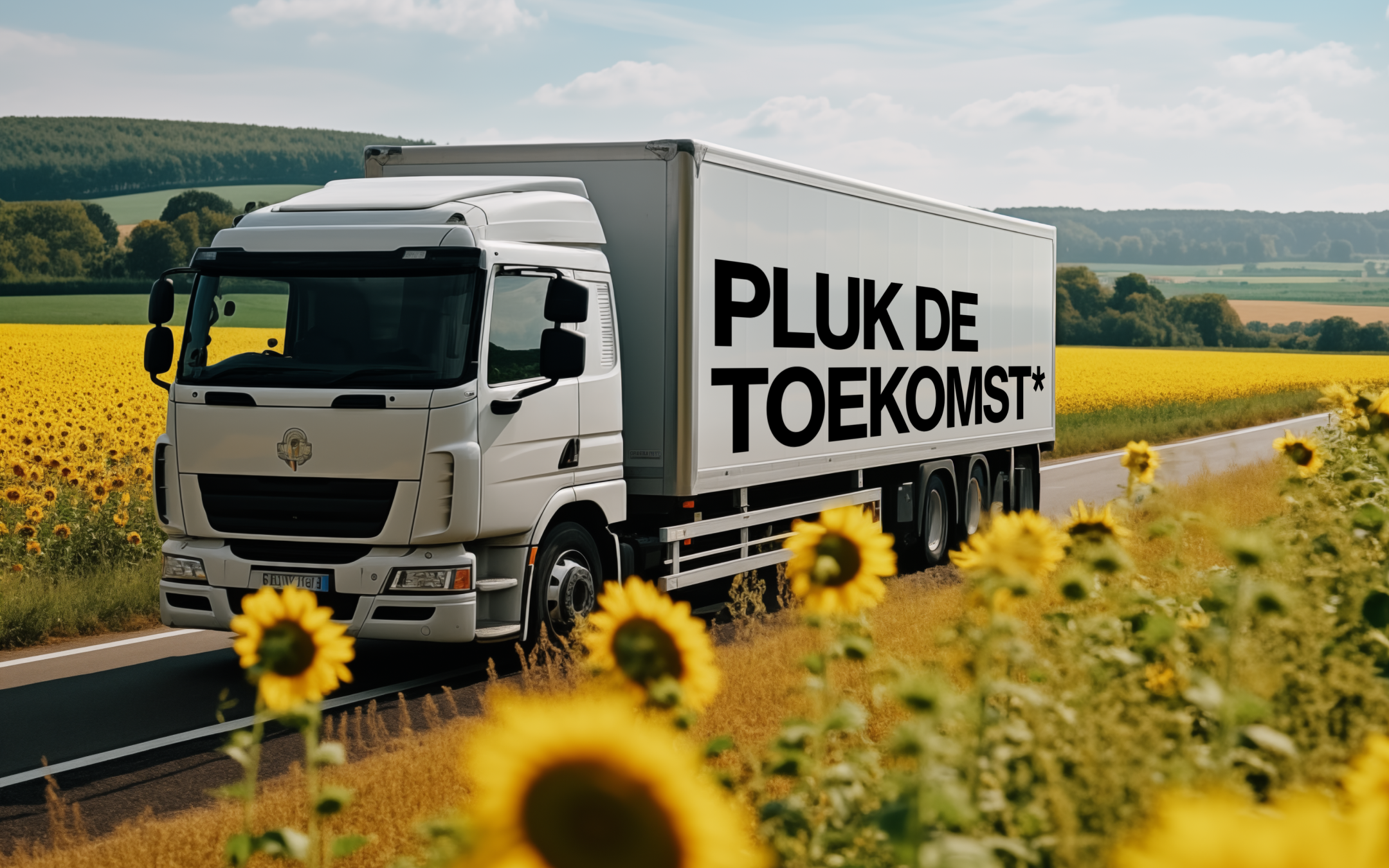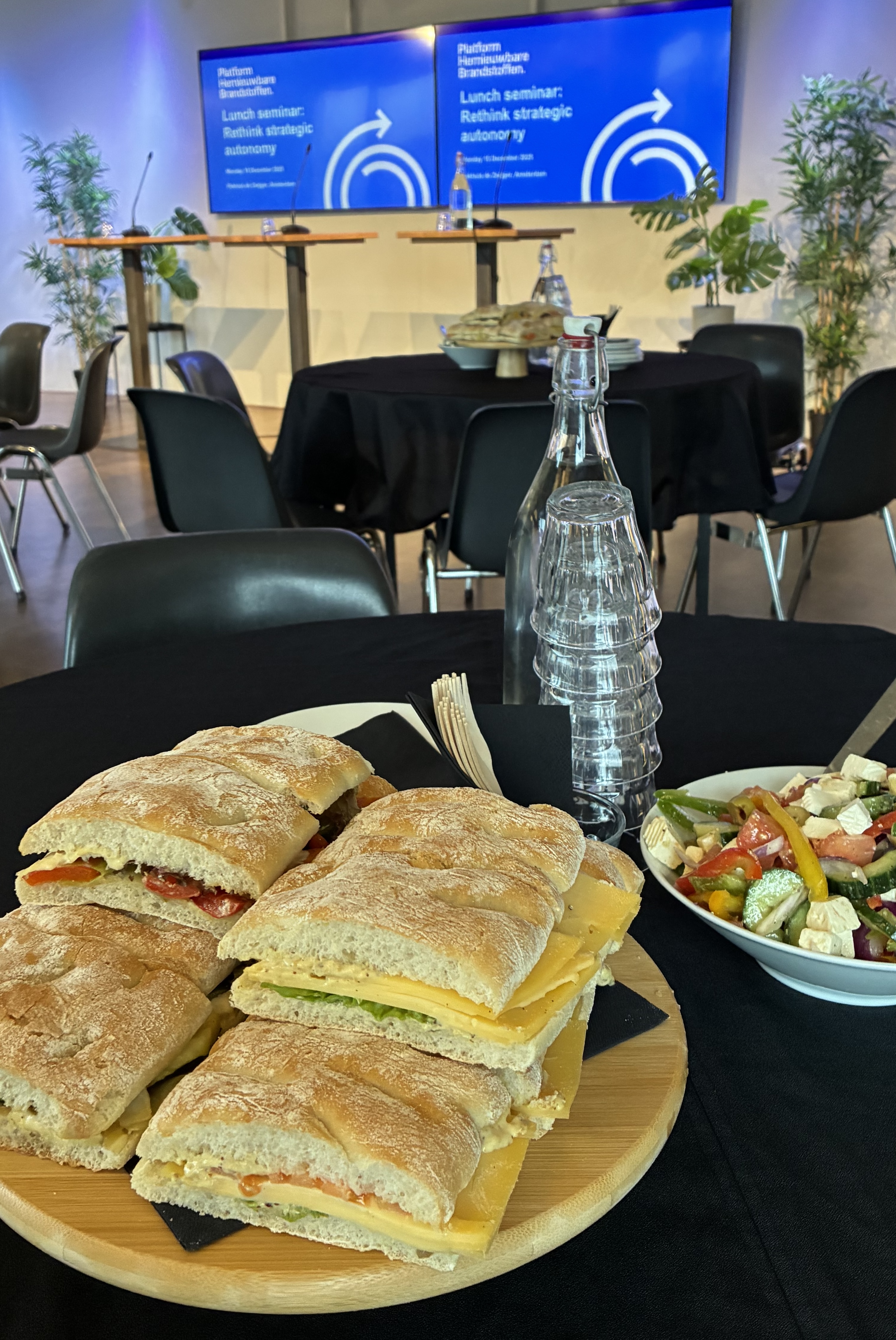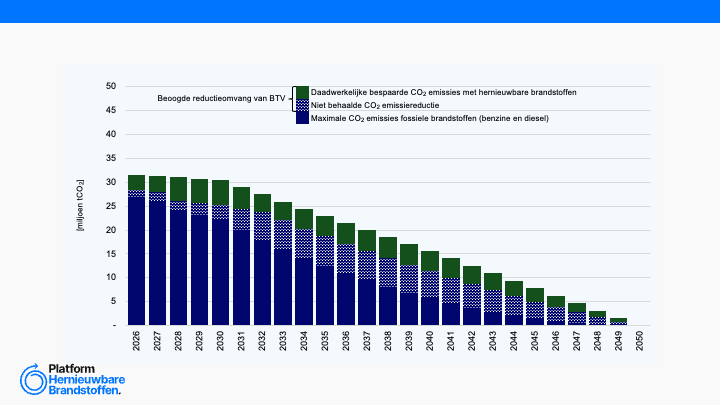Renewable Fuels and Green Chemistry: a game changing synergy?

By Sandra Galvan (ACN) and Emma Beroske (PHB)

Background
On July 3rd, representatives from the renewable fuels and green chemistry sectors gathered at Argent Energy’s Amsterdam site for a first of a kind event organized by Platform Renewable Fuels (PHB), Groene Chemie Nieuwe Economie (GCN) and Amsterdam Chemistry Network (ACN). The day brought together industry leaders, research institutions, policymakers and innovators with the goal of exploring how short-term investments in renewable fuels can help lay the foundation for a long-term, sustainable chemical industry. The event combined keynote presentations, guided discussions, and site visits to demonstrate innovative production sites and how shared infrastructure, policy support, and a focus on synergies can strengthen both sectors. The central message was clear: the challenges facing each industry are often mirrored in the other, and what is framed as a limitation in one domain may represent an opportunity in the other.
Context and shared challenges of the renewable fuel and green chemical sectors
The urgency to decarbonize Europe’s industrial and energy systems has never been greater. Yet, as participants emphasized, two crucial sectors—green chemistry and renewable fuels— are still navigating significant challenges as they attempt to scale. Green chemistry holds significant promise for reducing environmental impact and fostering a circular economy, but its business case remains difficult due to competition with fossil and no mandates. Start ups andinnovators in the chemical arena often lack the funding, permitting access, and policy frameworks needed to bring new technologies from lab to market. Many of the most promising developments—particularly those involving bio based feedstocks and circular materials, stall in the demo or pilot phase, caught in a “valley of death” where private capital is reluctant to step in, and public instruments are often inadequate or too slow. Despite rising public awareness and political ambition, a real demand-side market pull remains absent, and investors hesitate without policy-backed assurance that their innovations will be commercially viable in the long term.
At the same time, renewable fuels are positioned as an essential temporary solution for climate action, particularly in sectors such as shipping and aviation where electrification is not yet feasible. Companies like Argent Energy are producing biodiesel from waste oils and fats, significantly lowering the carbon intensity of transport fuels. Yet even as these products reduce CO₂ emissions, their long-term future remains uncertain. EU projections anticipate a near-total phase out of combustion-based transport by 2050, leaving investors concerned of funding infrastructure that may be considered obsolete in a few decades. The contrasting case of short-term necessity and long-term phase out undermine the confidence in the renewable fuels market. While the transport sectors face several policy mandates, the cost gap between fossil and sustainable fuels remains unaddressed in regulatory frameworks. Moreover, the same challenge faced by green chemistry—how to secure affordable, sustainable feedstocks at scale—applies equally to renewable fuels.
It became increasingly evident during the event that these two sectors are not only aligned in their goals but interdependent in their futures. Both rely on sustainable carbon sources such as biomass, captured CO₂, and biogenic waste. Both face large cost barriers and infrastructure constraints. And both lack sufficient market-based mechanisms to unlock the investments needed to scale. Rather than operating in silos, participants proposed a more integrated approach: using the scale, policy mechanisms, and infrastructure developed for renewable fuels to also support the broader adoption of green chemistry. This includes co-locating companies that use or process similar feedstocks, aligning regulatory efforts to stimulate demand for low-carbon products, and ensuring access to critical inputs such as green hydrogen and renewable electricity. The Port of Amsterdam, where Argent Energy is located,was highlighted as an example of how spatial planning and clustering can foster such synergies in practice.
Insights from the organizers and hosts
The event began with a welcome given by Katarzyna Golab from Argent Energy, who shared the company’s journey in building Europe’s leading waste-based biodiesel and glycerine production site. Argent operates facilities in both the UK and Amsterdam, with a third refinery under construction. Their business model is deeply rooted in circularity—valorising byproducts and investing in glycerine refinement as a high-value output. As part of the Swire group, Argent benefits from a broader environmental program and long-term strategic backing.
Marco Tibaldi from Amsterdam Chemistry Network (ACN) introduced role of the organisation in catalysing connections between chemistry-focused companies, research institutions, and startups in the region. ACN supports innovation across circular chemistry, AI and robotics for materials science, and life sciences. With members including the Port of Amsterdam, UvA, VU, and Matrix Innovation Center, ACN helps bridge talent, technology, and infrastructurethrough professional matchmaking, events, and innovation programming.
Loes Knotter, Executive Director of the Dutch Renewable Fuels Platform, framed the event in the context of the Netherlands’ Nationaal Plan Energiesysteem (NPE). She explained how current national energy systems are dominated by fossil carbon but shifting towards increasing electrification, with the use of fossil fuels needing to decline continuously until 2050. However, maritime, aviation and industrial sectors still depend heavily on fossil-derived fuels. Renewable fuels can help close this gap in the short term, especially if strategically co-developed with the chemical sector. She emphasized the need for long-term vision and spatial planning, identifying regions like the Port of Amsterdam, Eemshaven and Tata Steel as key locations for new industrial clusters, particularly given access to biogenic carbon, electricity, hydrogen,and CO₂ pipelines.
Arnold Stokking, Chair of Groene Chemie Nieuwe Ecomomie (GCNE), highlighted the network’s work in supporting “game changers”, innovative companies driving new chemistry with biobased feedstocks and circular models. GCNE’s focus includes large-scale syngas chemistry, petrochemical adaptation, and entirely new green chemistry pathways. Arnold stressed the need for demand creation, regulatory reform (especially the outdated “end of waste” framework), and policy incentives such as product certification and public procurement. GCNE will also develop a blueprint for a new scaling fund tailored to the green chemistry transition, in anticipation of the upcoming Dutch elections. Companies were encouraged not to remain spectators, but to actively engage and help shape thisnew system.
Expert Presentations

Dr. Arij van Berkel from Lux Research delivered a keynote exploring the historical emergence of the chemical industry in response to new societal needs and emergence of cheap feedstocks. From the advent of synthetic soap and plastics to colorants and glass, he demonstrated that chemical transitions often occur not in slow evolutions but in leaps, when a new need converges with a new material or process. He challenged attendees to consider what today’s equivalent convergence might be. Europe, he argued, has an edge due to strong consumer interest in biodiversity, wellness, and sustainability. But realizing this opportunity requires bold investment and creativity, not only in decarbonization but in new value creation. According to Arij, time is not the limiting factor, vision is.
Dr. Colette Alma, Chair of the Branstoffentafel, focused on the concept of sustainable carbon. Electrification can address energy use, but not the carbon content of materials, meaning that chemistry and fuels both depend on access to carbon that does not add to atmospheric CO₂. This includes biomass, captured CO₂, and circular carbon. Currently, much carbon-rich waste is still burned rather than valorised. Colette emphasized that production of renewable fuels and materials will always be more expensive than fossil alternatives, and that only consistent, long-term policy, including mandates and incentives, can shift this equation. She warned that the chemical sector lacks a cohesive EU framework for carbon policy and called for collaboration, not competition, between the fuels and chemical industries.
Joey van Elswijk, representing the Port of Amsterdam, discussed how the port is transitioning from a fossil-dominated hub (historically reliant on coal, oil, and related trades) to a platform for bio-based, circular industry. Already home to Argent Energy, ChainCraft, and other renewable players, the port is strategically zoning its territory to cluster sustainable activities. By 2030, no new fossil leases will be issued, and coal will be fully phased out. The port is also planning infrastructure to support hydrogen and carbon valorisation, including initiatives like BioPark and partnerships with Renewi and AEB. Their goal is to offer not just space, but system-level coordination and feedstock flexibility that will enable the emergence of a modern, green industrial ecosystem.
Reflections and Forward Momentum
A number of additional insights emerged during the course of the day. Marc den Hartog of ChainCraft shared results from the “Plastic Table” negotiations, where industry and civil society reached consensus on policy recommendations to support circular plastics. These included a new circular levy, voluntary but binding commitments from major brand owners like Unilever, and proposals to de-risk the price gap between recycled and fossil materials. Angelique Erkenbosch from GCNE emphasized the growing awareness that private capital is unlikely to fund scale-up phases without strong public leadership. This reinforced the case for a sector-specific financing mechanism to support demo plants and early commercial deployments. Speakers also emphasized the value of cross-sectoral collaboration, not only between fuel and chemistry producers, but also with policymakers, investors, and port authorities.
Concluding remarks
This event demonstrated that while the renewable fuels and green chemistry sectors face real structural barriers, they also share many of the same tools, goals, and constraints. Rather than waiting for fully mature regulatory or financial ecosystems to emerge, the participants advocated for bold cooperation today which can start by aligning infrastructure, sharing feedstocks, reforming permitting, and generating collective demand.
The Port ofAmsterdam stands out as a promising case study: not just as a location, but as a vision of how industrial and environmental goals can be aligned through strategic coordination. If pursued with growing support, this collaborative approach could accelerate the Netherlands' transition to a future in which carbon is not eliminated, but reimagined as a sustainable, circular asset.
Download slides
- Presentation from Argent Energy by Katarzyna Golab - download
- Presentation from Amsterdam Chemistry Network by Marco Tibaldi - download
- Presentation from Platform Renewable Fuels by Loes Knotter - download
- Presentation from Groene Chemie Nieuwe Economie by Arnold Stokking - donwlaod
- Presentation of Arij van Berkel from Lux Research - download
- Presentation of Joey van Elswijk representing the Port of Amsterdam - download
Recente artikelen
Retrospective on Lunch Seminar: Rethink strategic autonomy | December 15, 2025

Analyse brandstoftransitieverplichting

